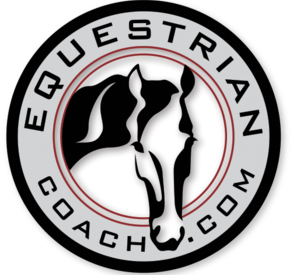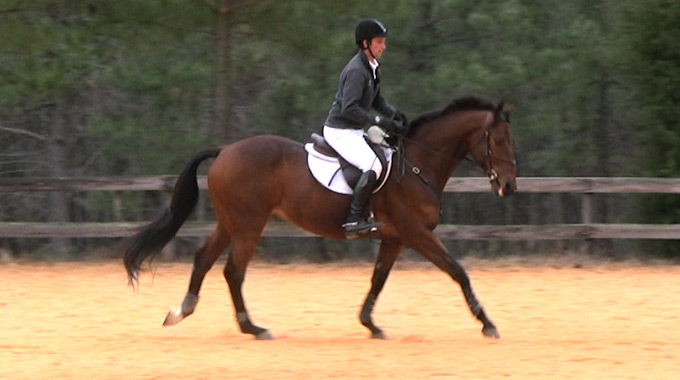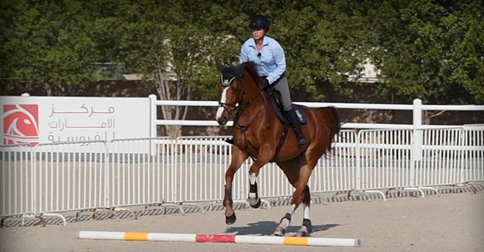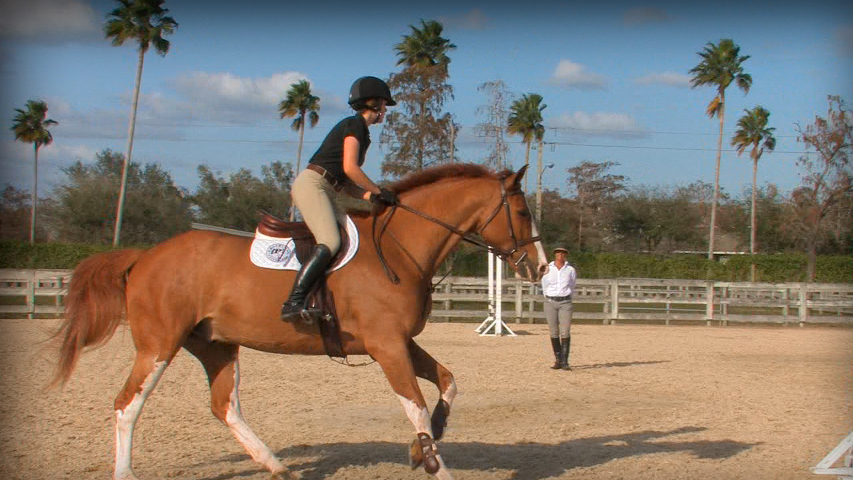Linda Allen
- 11 Jul, 2018
- 0 Comments
- 6 Mins Read
Exercises For A Thoroughbred That Gets Heavy and Strung Out In The Canter
Submitted by member: Jessica
Hi! I love this site and am a frequent viewer of the videos, having watched the fundamentals of flatwork, and many others. My question is about my Thoroughbred. I have been riding him for 4 years and trained him myself. He is responsive to the leg, has shoulder-ins, hip-ins, leg yields, and is super brave to the jumps. My problem is he feels like he’s ALWAYS on the forehand in the canter, like he’s a strung out mess. I feel like he is not adjustable at all coming to the jumps, is wiggly, and has no balance or impulsion in the canter.
The trot he has great downward and upward transitions within the gait, he feels lifted and easy to manage, but as soon as I ask for the canter everything falls apart.
Any exercises or suggestions to get him to sit and lift and get off the forehand would greatly be appreciated, and to teach him to be adjustable. I’ve tried transitions through poles but it is always ugly with him flailing around.
Thank you so much!
Answer by Linda Allen
Having a horse that feels quite balanced at the trot but falls onto their forehand at the canter is not an uncommon problem. Straight Thoroughbreds tend to be more susceptible to this issue since they were bred for a long ground-covering gallop rather than the rounder, more up-hill canter that makes getting to the jumps easier in our discipline.
While many trainers will look first to changing the bit to something that will make the horse feel lighter in your hand (at least in the short-term), this often produces a hollow back and a 4-beat canter with no power in it for jumping. The lasting solution involves making the horse more aware of his balance so that doesn’t need to lay on the bit. Nothing is more effective than frequent transitions for this work. In the case of a horse such as yours, ‘frequent’ means literally making some sort of change every few strides. The longer any horse travels at the same speed in a straight line the more his balance will tend to fall onto the forehand. By using circles, serpentines, shortening and lengthening of stride, simple changes of lead, and some lateral work at the canter, your horse will find that it is easier to maintain his balance in order to be ready to make each change in track or stride you ask for.
I find that using ground poles for much of this work makes it more interesting for your horse. And, because it is harder for the unbalanced (front-end loaded) horse to sort himself out to avoid bumping into the poles, finding his balance on the shorter, more ‘together’ stride will create a reward in itself. Try putting poles at the points of the compass on a circle of about 25 meters diameter. Try to get him to maintain the canter over all the poles on the circle with each quadrant of the circle as much like the others as possible. This is far harder than it sounds and it will probably feel pretty rough at first. Persevere, trying to make small improvements over a couple of times around the circle in one direction. Then walk and do it the other way. Set it up for your horse to gradually learn what it takes for him to organize himself so he doesn’t step on the poles. Your goal is the same number of strides in each quadrant and a balanced stride over the center of each pole. He’ll get better with practice but don’t drill it non-stop. Add variety by changing direction over one of the poles to circle on the other lead. You can also place two poles about 70’ apart and, on the straight line, canter the two poles. Your long strided horse will probably find it easiest to do 5 strides between the poles, but then ask him to do six strides between them, and when he becomes more adjustable, even seven strides.
Setting poles 10’ apart to canter through is also good. Raised cavaletti are much better; 8” or so in height is enough. Start with 3 and aim for 5 with your horse holding himself together to take even strides over each one.
For a horse that has had lots of practice on his long, disorganized canter, none of these exercises will be pretty at first. Keep your patience and let him learn how to master the exercises. Use your hands as little as necessary to follow the pattern and be sure to work on keeping your own balance centered – it is all too easy to let yourself fall forward on a downhill horse!
More Learning
Tips to Get a Horse Off the Forehand on the Flat and Over Jumps by Jim Wofford
Training a Green Thoroughbred Who Gets Hot and Unbalanced in the Canter by Linda Allen
Training a Young Horse to Collect the Canter by Geoff Teall, Julie Winkel, Verena Mahin and Linda Allen
Encouraging Your Horse To Have An “Uphill” Canter by Bernie Traurig
How To Get Your Horse Off The Forehand Without Over Bitting by Bernie Traurig
Video Recommendations:
FREE VIDEO: The “Nip Up” – A Half-Halt Technique for Your Horse
Bernie Traurig
In this free video tip, Bernie Traurig teaches us a very handy tool all equestrians should have in their riding toolbox. One of his versions of a half-halt that is simple to do, he calls a “nip up.” This can be used in many instances, especially on a horse that is too low in its carriage or is too heavy on the forehand. Bernie demonstrates how to use this technique properly and effectively without hanging on the horse’s mouth. Ultimately, this should be an invisible and soft correction that you should only use when absolutely necessary so it remains meaningful. This technique can also be found in the books by Vladimir Littauer (Commonsense Horsemanship) and Gordon Wright (Horsemanship & Horsemastership) where it is defined as a Half-Halt.
Running Time: 2 minutes and 49 seconds
The Alice Debany Clero System – Part 1 – Pole Exercises
Bernie Traurig
Dubai Show Jumping coach, Alice Debany Clero, joins us to share techniques she’s developed throughout her long and impressive international career. In part one of her series of topics, Alice shows how horse and rider can iron out problems with no concussion of the legs, no mental stress and no accidents using pole exercises. The goal is to teach the horse to have a good time while learning the job of show jumping.
Running Time: 16 minutes and 45 seconds
Circle Exercise
Val Renihan
Top equitation, hunter and jumper trainer, Val Renihan, has an exercise to hone the rider’s accuracy while reinforcing the horseʼs adjustability and responsiveness to the aids. *(This exercise can also be done over poles on the ground.)
Running Time: 9 minutes and 14 seconds
Shortening And Lengthening Exercises Over Jumps
Julie Winkel
Join Julie Winkel & her students as they demonstrate exercises designed to shorten & lengthen the horse’s stride within lines. Julie discusses strategies to execute lines that present different types of distance challenges. Practice of these exercises provides additional benefits that include improved rider/horse communication and sharpening of the rider’s eye. *(This exercise can also be done over poles on the ground.)
Running Time: 27 minutes and 19 seconds
Have Something You Want to Ask Our Panel of Experts?
Ask The Experts is the ultimate way to get help from the top professionals in the equestrian industry without leaving the comfort of your home. This service is available to Monthly, Annual, and Lifetime Members of EquestrianCoach.com.





